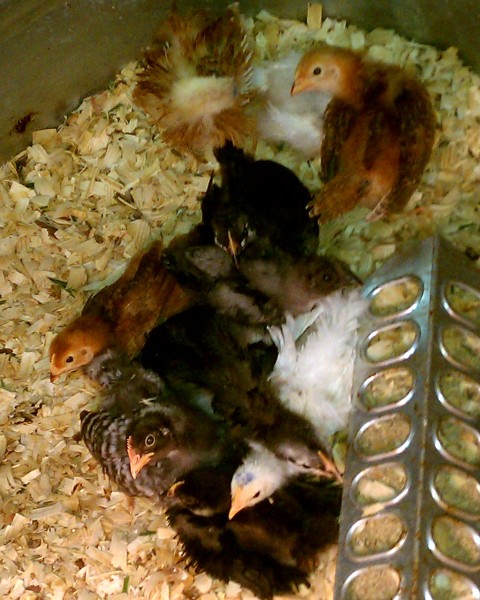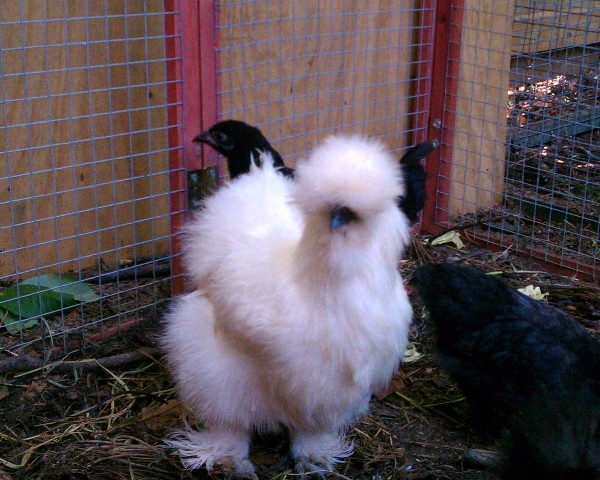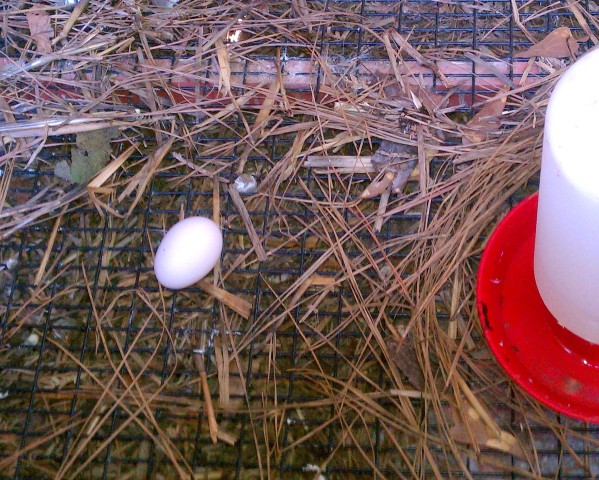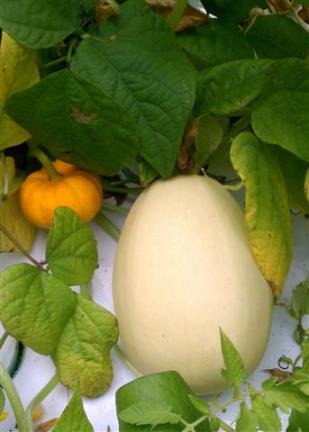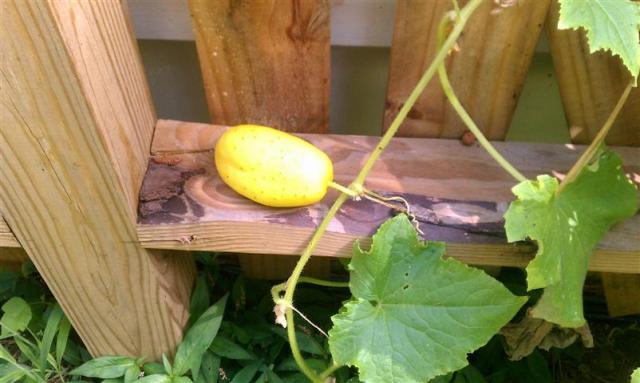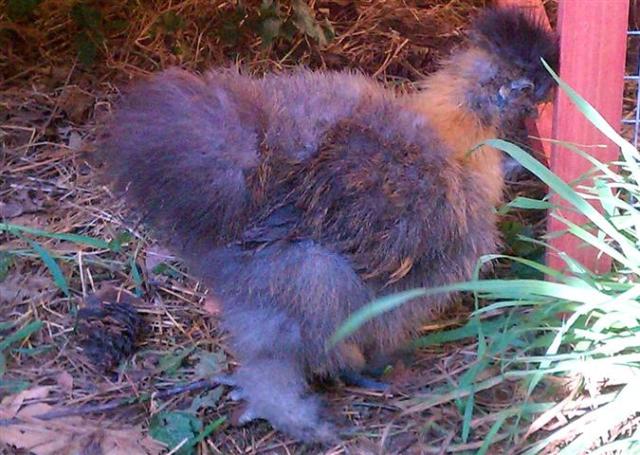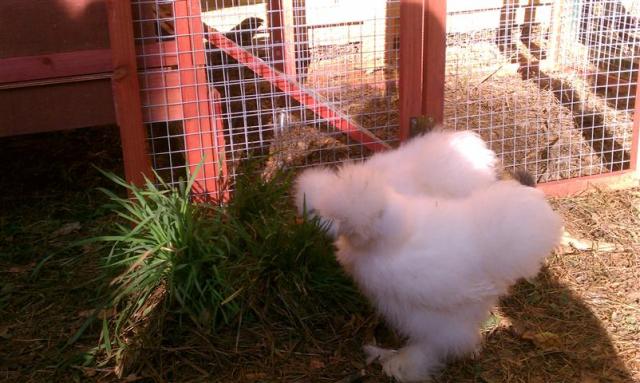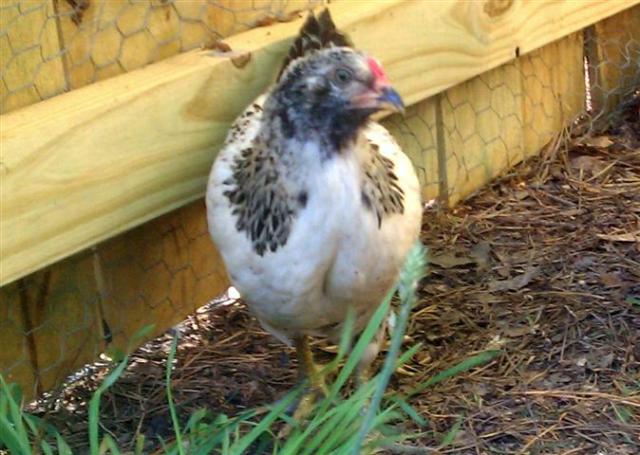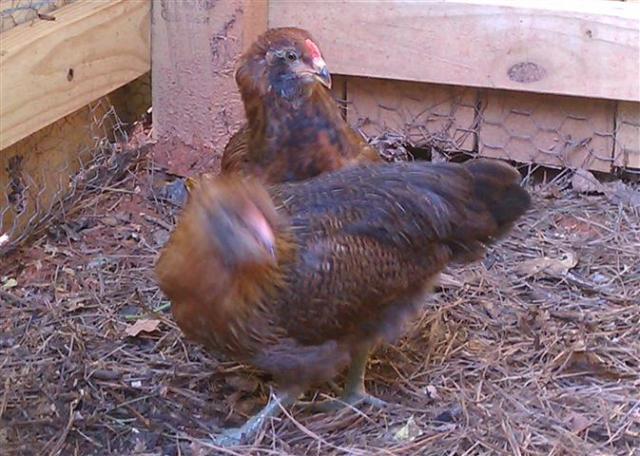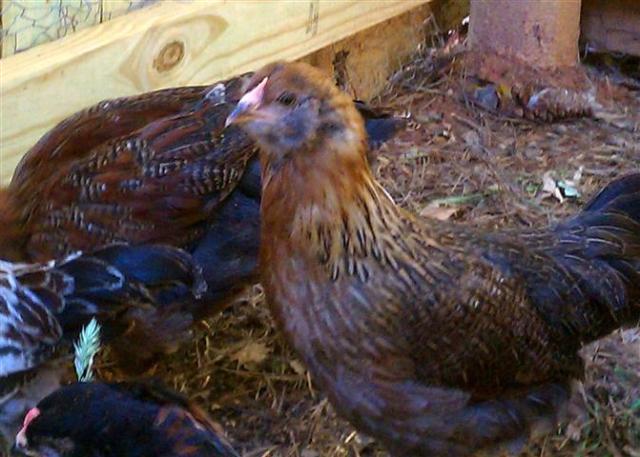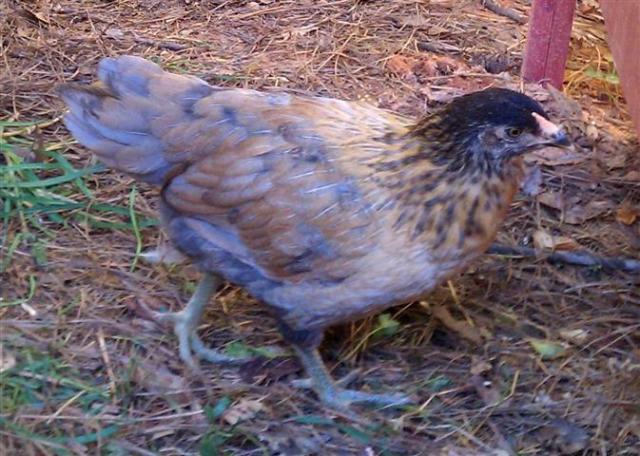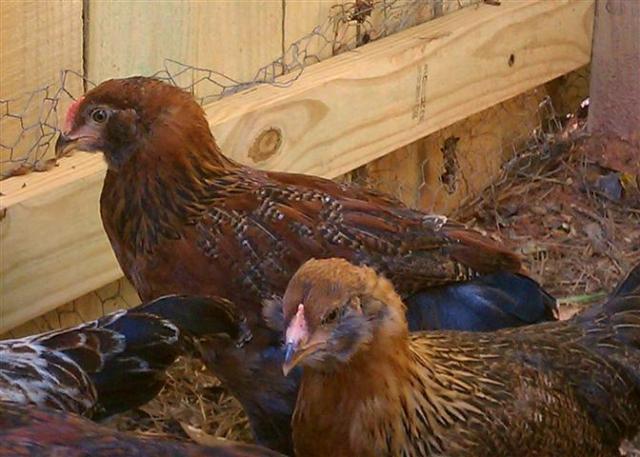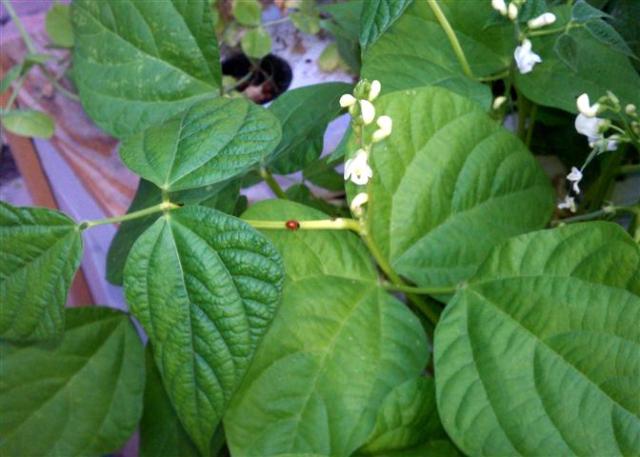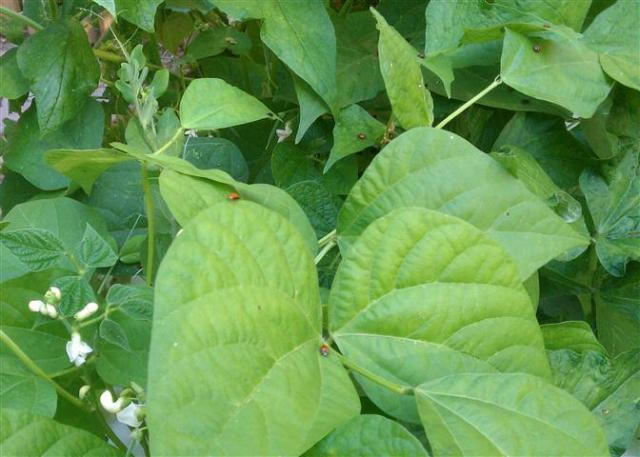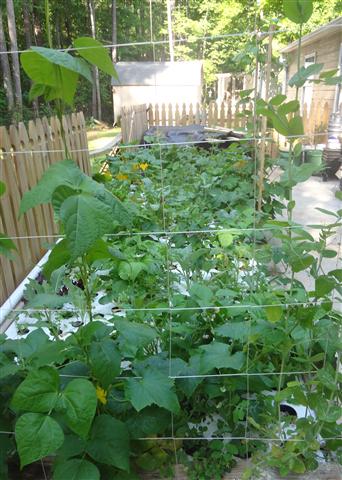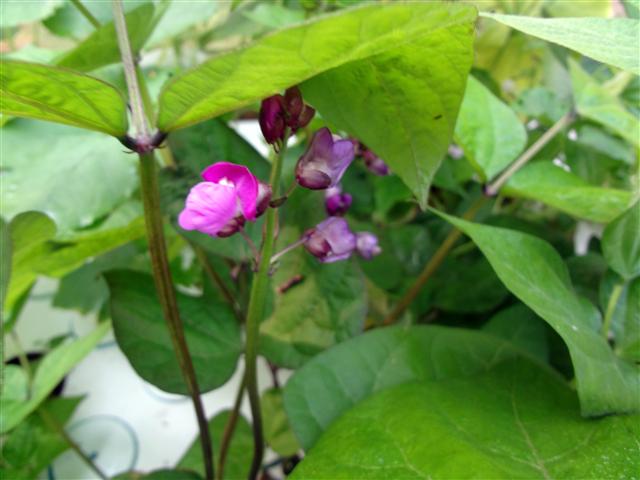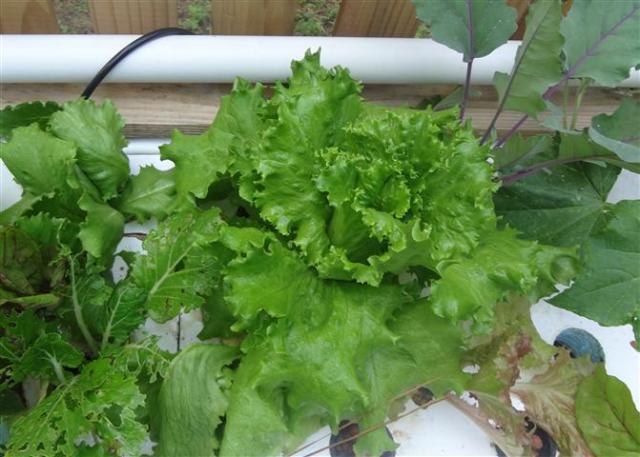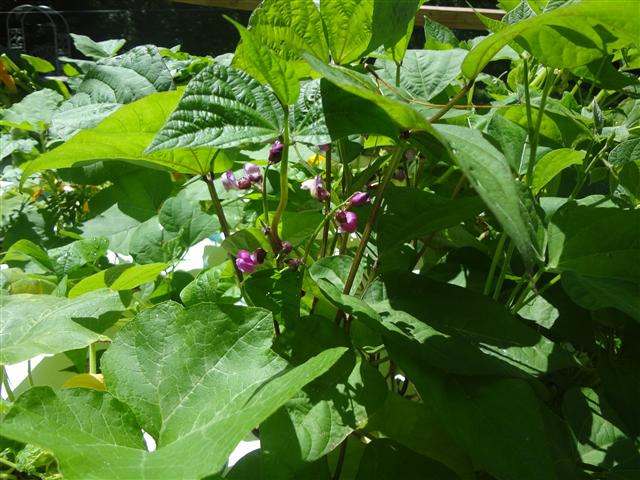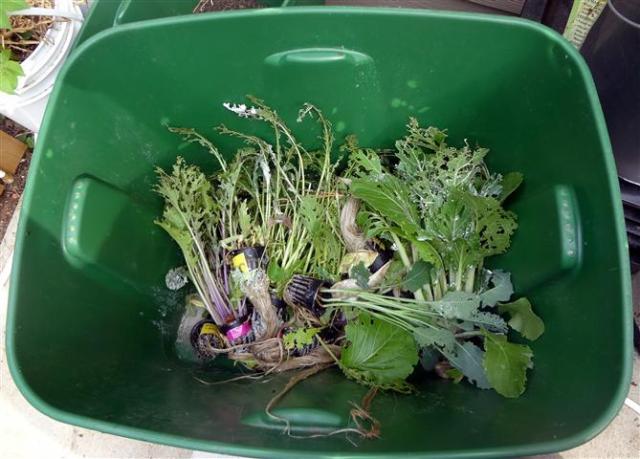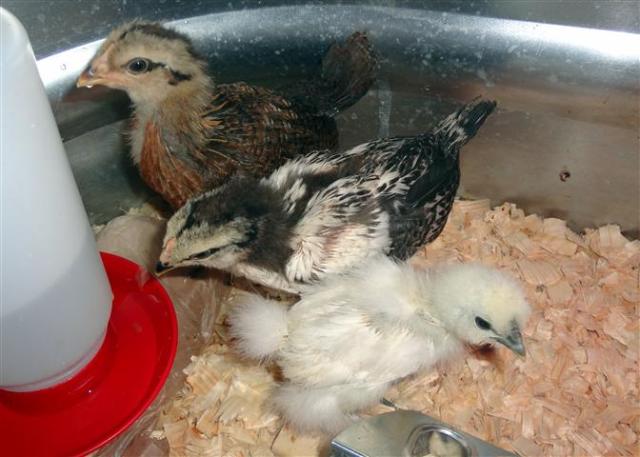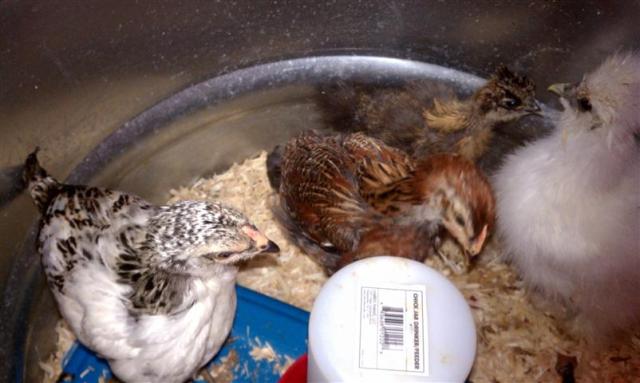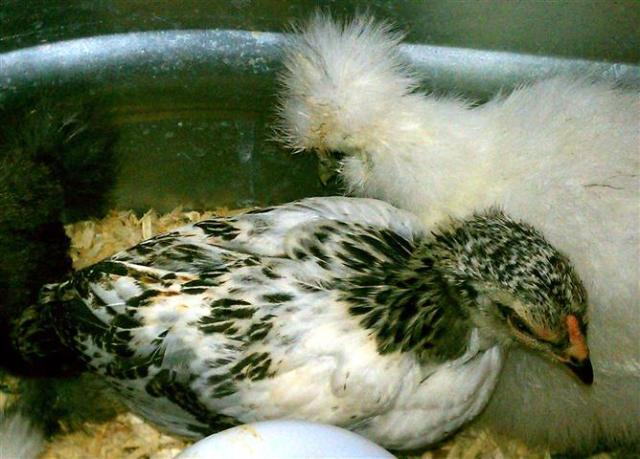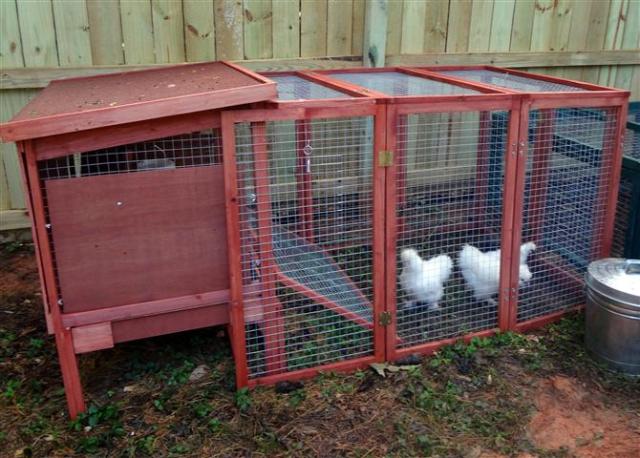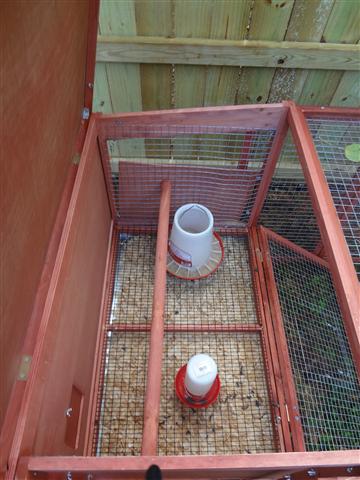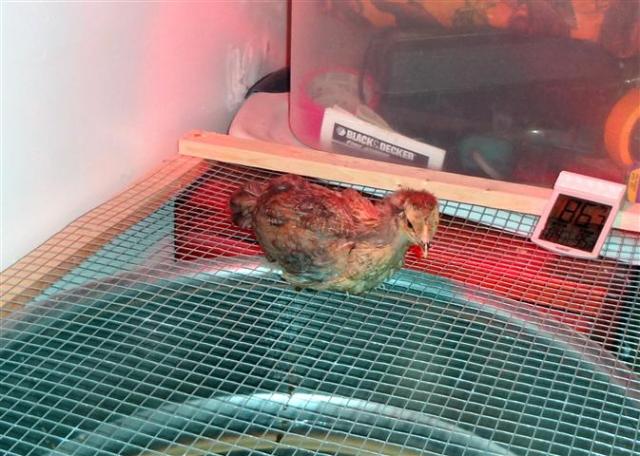***Warning! This post contains some graphic language…not vulgarity…just some detailed information about preparing a rooster (actually, a cockerel) for dinner. As requested by one of our wonderful readers, there are no photos in this post.
We have some sad, yet tasty news…
We have finally confirmed that eight of our ten chickens are cockerels – the three large, white Silkies and five of the Ameraucanas. They have all been crowing louder and louder every day (well, one of the Silkies just started this morning), and one of our neighbors said they heard them a few mornings ago. We can’t have any roosters here, so it’s time for them to go to chicken heaven if we can’t find them a home immediately.
We decided it was time to prepare a chicken dinner, so we chose an area behind our house that would allow us to perform the execution without our neighbors having to watch a potentially messy and loud activity.
Since we decided to separate the chicken’s head from his neck with an ax, we needed a stable and flat surface that would not damage the sharp blade. We had some trees cut down a while ago that were cut into two-foot sections and placed in a corner of our property. One of the logs was retrieved and then placed on end in the execution area. We then began to look for the rest of our tools – an ax and knife, a large pot of water, a baking thermometer, a heat source, a small trash can and plastic bag.
Since I have watched a number of YouTube videos about turning a live chicken into a plate of food, I knew that a large pot of water that is heated to about 150° F would help loosen the feathers. As Kim was heating water on the stove, I remembered that we had an EcoZoom Versa rocket stove that we bought a month or so ago – not for this purpose, but it would work perfectly as a water-pot stand and to keep the water hot as we “processed” the chicken. This stove uses very little wood to create a lot of heat, so we needed some wood.
It rained the night before and all the wood in our yard was wet, so we used some dryer lint and pine shavings (aka, brooder bedding) to start the fire and to dry small sticks and chunks of ground-up stumps that were laying around the yard.
We also needed a place to drain the blood and to hold the chicken feathers. Kim found a small garbage can, lined it with a trash bag, and placed it next to the chopping block.
Once the hot water was in place and we confirmed that the temperature was just right, Kim held the roo upside down by his legs to keep him calm and I gently placed his head on the flat side of the log. Then I held his head with my left hand and the ax with my right.
For safety reasons, I would have preferred to hammer two nails into the log and then place the chicken’s neck between the nails instead of holding the head with my hand. After all, one slip of the ax and I could remove my fingers instead of his head. Unfortunately, we couldn’t find any nails and I am a little too impatient to put off an execution.
As I was aiming and preparing to swing the ax, I was thinking about the French Revolution and imagining what I was going to do if I hit my hand with the blade. Then I remembered that I should focus on what I want to hit, instead of what I don’t want to hit.
After moving the ax up and down a few time, I swung the ax and hit my target. Next thing I knew I was holding his head as Kim swung his body over the plastic bag. I dropped his head in the bag and took his legs from Kim so she could get me a wet towel to wash the blood off my face. Apparently, it squirted on me after the headectomy or as he flopped around above the bag. To my surprise, his body continued to move around quickly for at least one full minute before it relaxed and went limp.
Using his legs as a handle, I dipped his body in the water for about 30-45 seconds, wiggling it around gently as I waited. After removing it from the water, I pulled on a few feathers to see if they were ready to be removed. They came out easily, but there were so many that it took two of us at least 15 minutes to remove all but a few pin feathers.
When I got tired of pulling out feathers, I took his pale body into the kitchen, slipped on some disposable gloves, cut off his tail with a pair of kitchen shears, and proceeded to cut the skin around the vent. This took much longer than I expected. Maybe I was being too careful, but I didn’t want to cut the intestines and contaminate the meat. After about fifteen minutes I was able to put my hand inside, along the backbone, and pull out most of the organs. A few more scoops and out came the lungs, heart, and some parts that are still unidentified.
I wanted to soak the meat in some salt water overnight to insure all the blood was removed, but Kim decided that we needed to slow-cook it in a crockpot right away. After about six hours, she served the roo for dinner with some fresh veggies and homemade bread.
Our first roo dinner was absolutely delicious. In fact, it was the best tasting chicken I have ever eaten.
As I chewed…and chewed…and chewed…that delicious meat, I realized that something was wrong. The roo was so young that I expected it to be fall-off-the-bone tender, but, instead, it was chewy like a thin piece of jerky. Although we ate our first roo dinner and enjoyed the taste, I’m very happy that we didn’t have any guest over for dinner that night.
We learned some valuable lessons about raising and eating chickens.
1. Don’t buy “straight-run” chickens if you want hens. Technically, you should get a 50-50 mix of male and female chicks, but you will more likely get an 80-20 mix (with the 80 being males). I suspect that some breeders “sex” their chicks by placing the females in one box and the males in another. Then they sell their females as “sexed” chicks and males as “straight run.” While this does not seem to be an ethical business practice, I understand that they need to sell the males as well. The main lesson here: Don’t be cheap. It’s worth paying a little extra to get what you want.
2. Keep some dry wood out of the weather at all times. You never know when you’ll need to heat a big pot of water after it rains.
3. Don’t hold the chicken’s head with one hand and swing the ax near that hand. I was certifiably stupid for doing this and was within an inch or so of losing some fingers. Yes, I got lucky this time, but luck is often short-lived. I’ll have to find a safer way to hold the chicken’s head next time.
4. Don’t eat fresh chicken! In other words, don’t eat chicken immediately after killing it unless you are starving and unable to wait 24 hours. After a little research, I learned that it’s best to let the meat rest overnight so it has time to relax…unless you like chewy roos.

